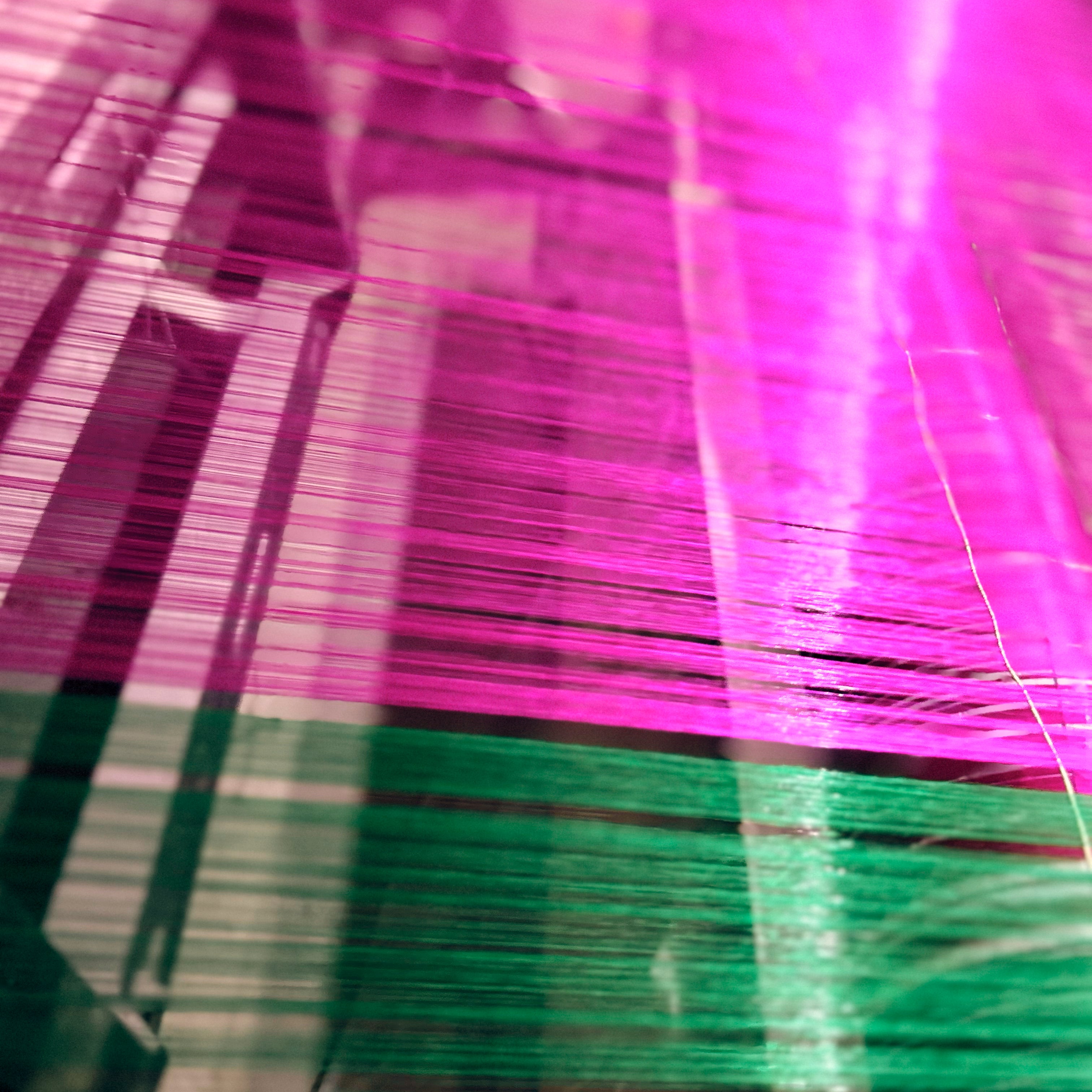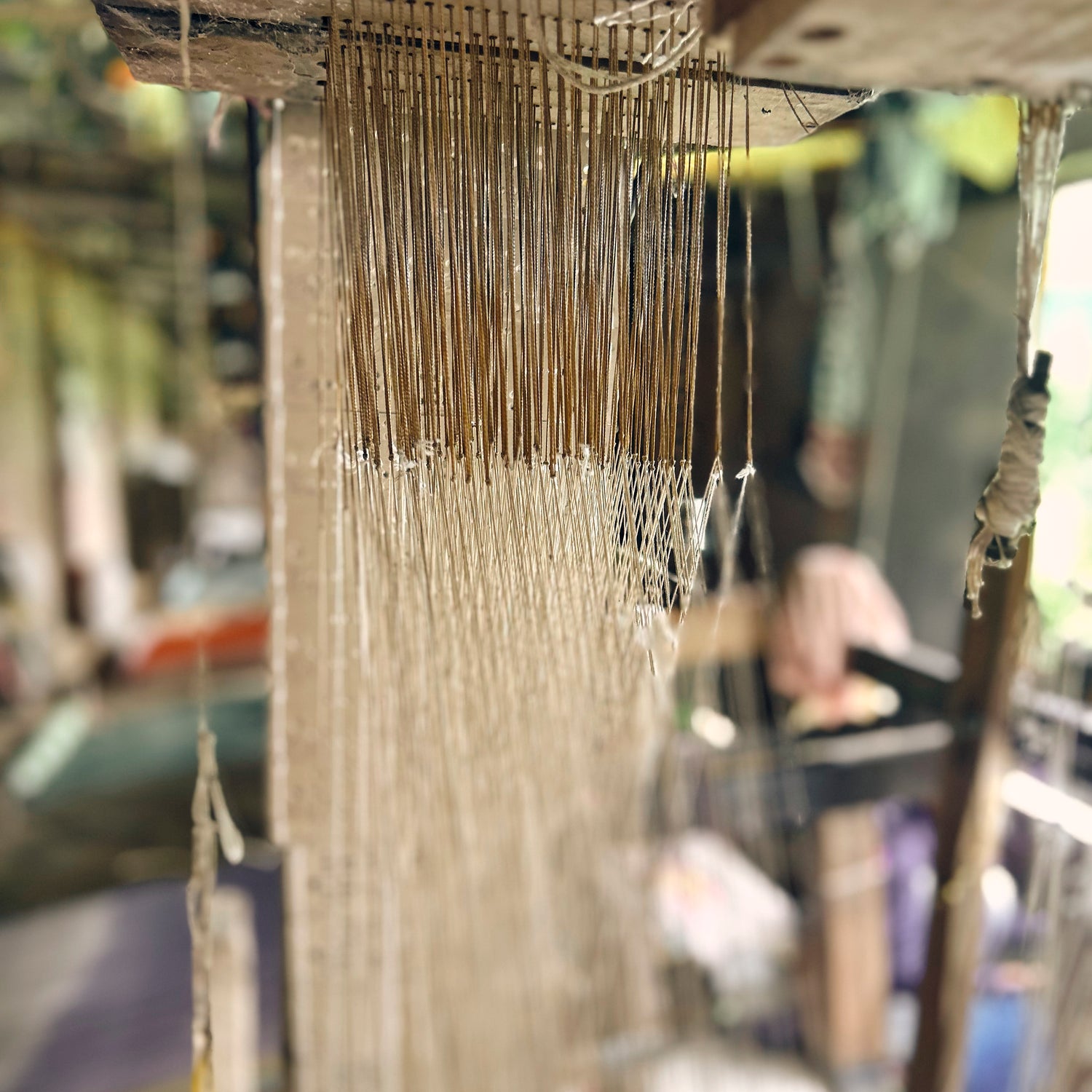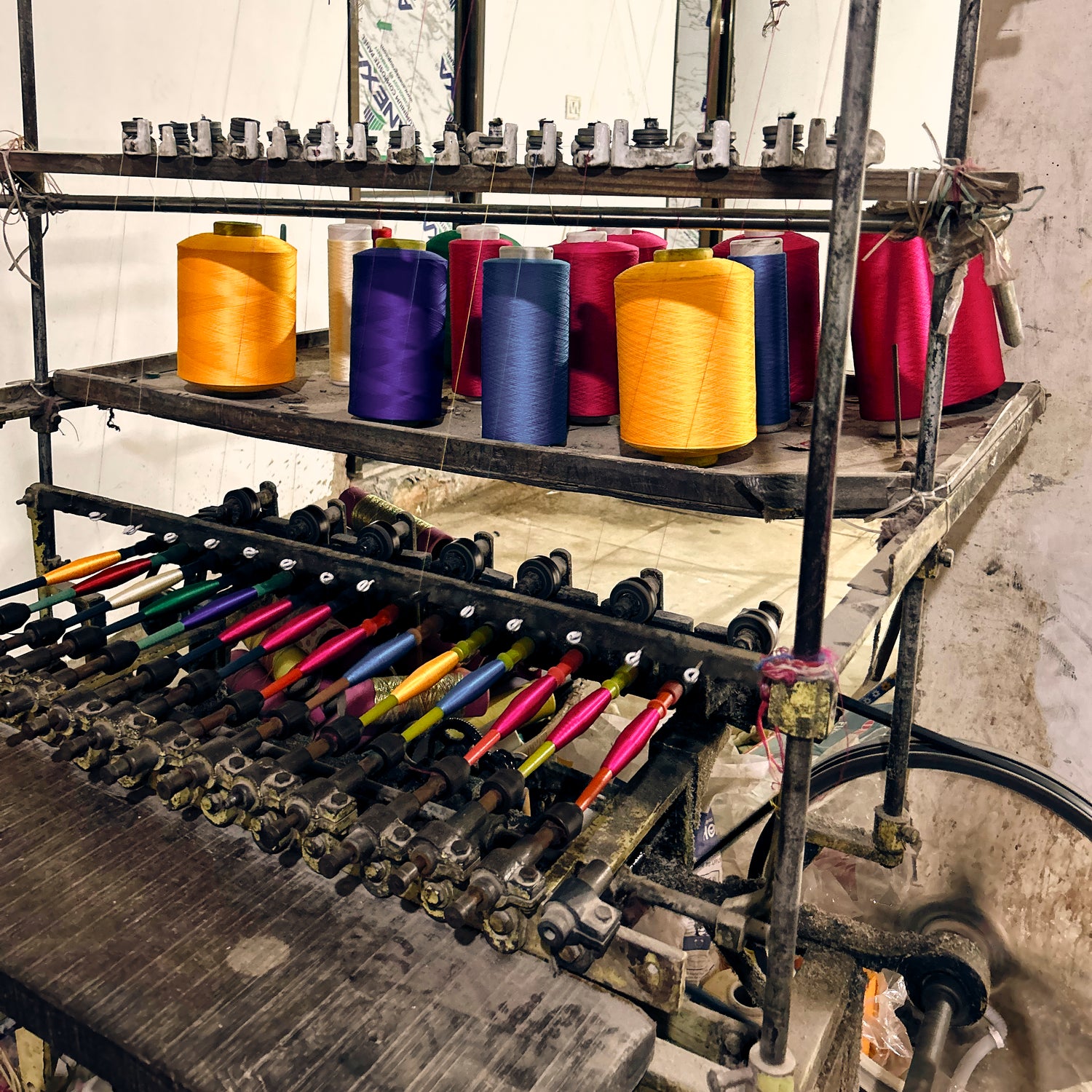
"Every weaving is as unique as the weaver who makes it. The goddess does not want us to imitate some ideal of perfection, but to be our true selves."— Deborah Harkness
Silk has a rich history in India, dating back 4000 years to the cities of Harappa and Mohenjo Daro. A Buddhist monk is credited with bringing Chinese silk-reeling techniques to India during the Gupta period (AD 400-600)

Banaras, also known as Varanasi or Kashi, is one of the oldest continuously inhabited cities in the world. It is not just a city but a living testament to India’s rich cultural and spiritual heritage. Banarasi sarees come in various types, each with its unique characteristics and weaving techniques. Here are some of the most prominent types:

- KATAN: This is a pure silk saree, known for its smooth texture and durability. The silk threads are twisted and woven into pure silk fabrics.
- SHATTIR: These sarees are made from a blend of silk and other fibers, making them more affordable while still maintaining a luxurious look.
- ORGANZA (Kora): These sarees are woven with silk and zari, giving them a sheer and lightweight texture. They are often adorned with intricate patterns and motifs.
- GEORGETTE: Made from finely twisted yarns, these sarees are lightweight and have a slightly crinkled texture, making them easy to drape.

- JANGLA: Characterized by intricate patterns of vegetation and floral motifs, these sarees are known for their elaborate designs and vibrant colors.
- TANCHOI: These sarees feature intricate and elaborate patterns, often with paisleys and labyrinthine designs, woven with a single or double warp and weft.
- CUTWORK: These sarees are created using the cutwork technique on plain texture, where the patterns are made by removing a part of the fabric and then weaving around it.
- TISSUE: These sarees are woven with golden or silver threads, giving them a rich, shimmering appearance. They are delicate and often used for special occasions.
- BUTIDAR: These sarees are known for their small, intricate motifs (butis) woven all over the fabric, often using gold, silver, or silk threads.

The preparation of a Banarasi saree is a meticulous and intricate process that involves several steps:

- SELECTION OF YARN: The process begins with selecting high-quality silk yarns. These yarns are procured in their raw form and are available in various qualities.
- DYEING OF YARN: The raw silk yarns are then dyed in vibrant colors by skilled dyers. This step ensures that the yarns have the desired hues for the saree.
- REELING: The dyed yarns are reeled to prepare them for weaving. This involves winding the yarn onto bobbins to ensure they are ready for the loom.
- DESIGNING: The design of the saree is created, often involving intricate patterns and motifs. This design is then transferred onto punch cards, which guide the weaving process.
- WEAVING: The actual weaving of the saree is done on a handloom. The punch cards control the movement of the loom, allowing the weaver to create the intricate patterns. This step is labor-intensive and requires great skill.

- FINISHING: Once the saree is woven, it is carefully removed from the loom and sent for finishing. This includes washing, drying, and ironing the saree. Any loose threads are trimmed, and the saree is inspected for quality.
- EMBELLISHMENT: Some Banarasi sarees may also undergo additional embellishment, such as zari work (gold or silver thread embroidery) or other decorative elements123.
This entire process can take anywhere from a few weeks to several months, depending on the complexity of the design and the type of Banarasi saree being made

Weaving a complete 9-yard Banarasi saree takes at least 15-30 days, depending on the complexity and demand of the pattern. Ideally, the weaving process involves at least three people: one weaver works on the saree, another spins the ring to form bundles, and a third assists with the border design.
A Banarasi saree is officially composed of 5600 threads, each 45 inches wide. The base, which is at least 24 to 26 inches long, is built by the artists, and the themes are decided during the bundling stage.
Design boards are created on graph paper, where an artist sketch designs and color concepts. Before finalizing the pattern, punch cards are produced, with hundreds of perforated cards made for a single saree design. On the loom, different shades and threads are used to knit these perforated cards. The cards are then systematically stroked to ensure the main weave picks up the correct patterns and textures
